Name Great Western Completed 31 March 1838 Launched 19 July 1837 Weight 2,337 tons Beam 18 m | Laid down 26 June 1836 Construction started 26 June 1836 Length 72 m Displacement 2.087 million kg | |
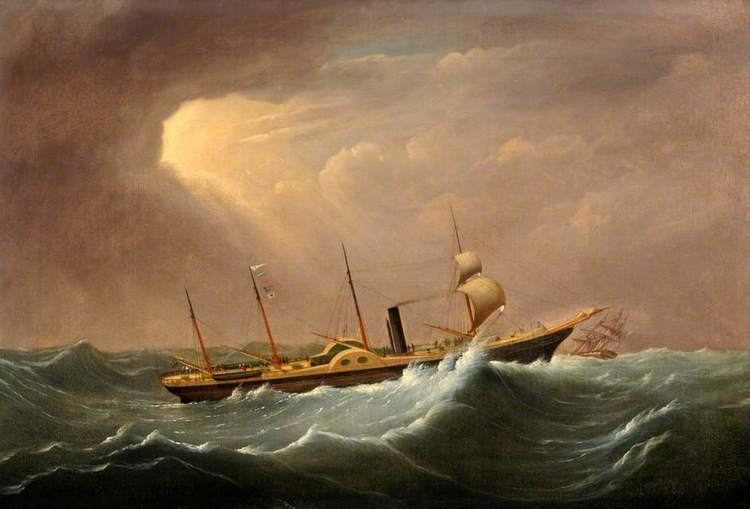 | ||
Builders William Patterson Shipbuilders, Bristol | ||
Ss great western
SS Great Western of 1838, was an oak-hulled paddle-wheel steamship, the first steamship purpose-built for crossing the Atlantic, and the initial unit of the Great Western Steamship Company. She was the largest passenger ship in the world from 1837 to 1839. Designed by Isambard Kingdom Brunel, Great Western proved satisfactory in service and was the model for all successful wooden Atlantic paddle-steamers. She was capable of making record Blue Riband voyages as late as 1843. Great Western worked to New York for 8 years until her owners went out of business. She was sold to the Royal Mail Steam Packet Company and was scrapped in 1856 after serving as a troop ship during the Crimean War.
Contents
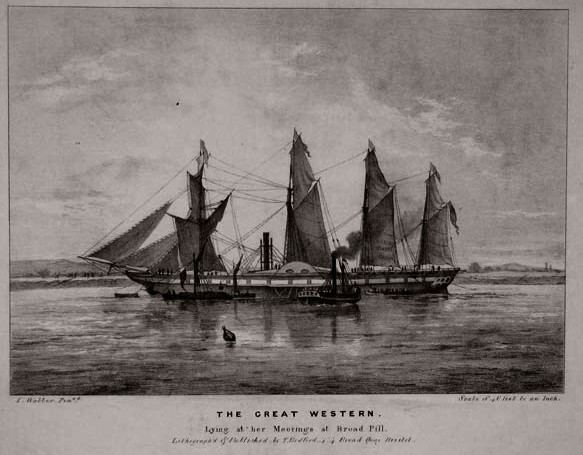
Development and design

In 1836, Isambard Brunel, his friend Thomas Guppy and a group of Bristol investors formed the Great Western Steamship Company to build a line of steamships for the Bristol-New York route. The idea of regular scheduled transatlantic service was under discussion by several groups and the rival British and American Steam Navigation Company was established at the same time. Great Western's design sparked controversy from critics that contended that she was too big. The principle that Brunel understood was that the carrying capacity of a ship increases as the cube of its dimensions, whilst the water resistance only increases as the square of its dimensions. This meant that large ships were more fuel efficient, something very important for long voyages across the Atlantic.
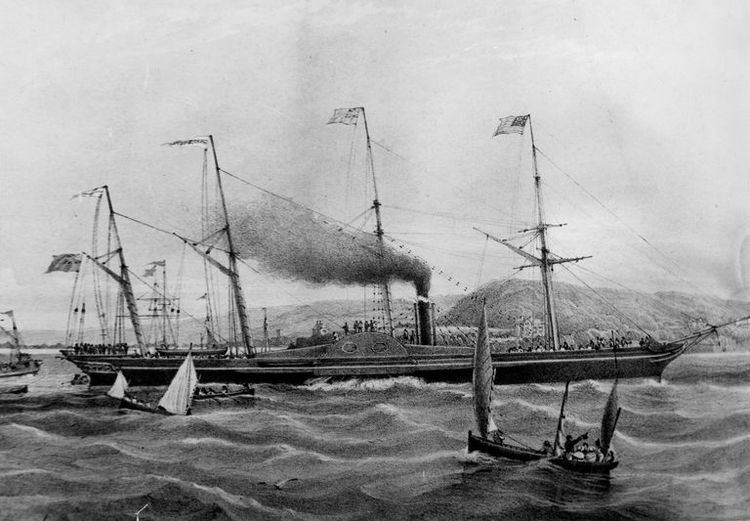
Great Western was an iron-strapped, wooden, side-wheel paddle steamer, with four masts to hoist the auxiliary sails. The sails were not just to provide auxiliary propulsion, but also were used in rough seas to keep the ship on an even keel and ensure that both paddle wheels remained in the water, driving the ship in a straight line. The hull was built of oak by traditional methods. She was the largest steamship for one year, until the British and American's British Queen went into service. Built at the shipyard of Patterson & Mercer in Bristol, Great Western was launched on 19 July 1837 and then sailed to London, where she was fitted with two side-lever steam engines from the firm of Maudslay, Sons & Field, producing 750 indicated horsepower between them.
Service history
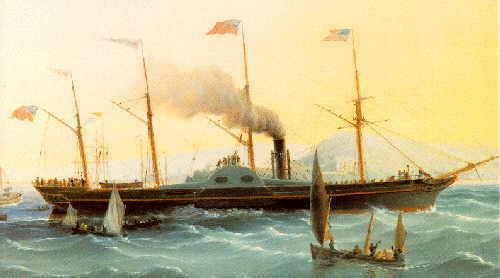
On 31 March 1838, Great Western sailed for Avonmouth (Bristol) to start her maiden voyage to New York. Before reaching Avonmouth, a fire broke out in the engine room. During the confusion Brunel fell 20 feet (6.1 m), and was injured. The fire was extinguished, and the damages to the ship were minimal, but Brunel had to be put ashore at Canvey Island. As a result of the accident, more than 50 passengers cancelled their bookings for the Bristol-New York voyage and when Great Western finally departed Avonmouth, only 7 passengers were aboard.
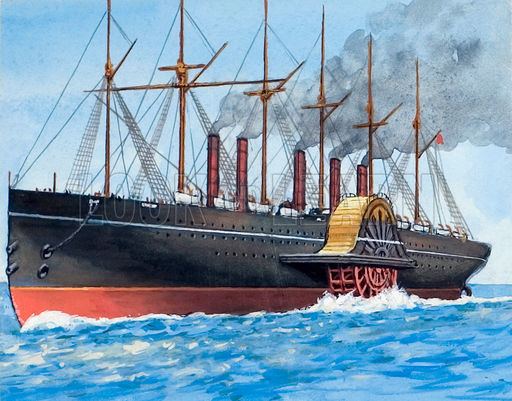
Construction of the rival British and American's first ship was delayed, and the company chartered Sirius to beat Great Western to New York. Sirius was a 700 GRT Irish Sea steam packet on the London – Cork route, and had part of her passenger accommodation removed to make room for extra coal bunkers. She left London three days before Great Western, refuelled at Cork, and departed for New York on 4 April. Great Western was delayed in Bristol because of the fire and did not depart until 8 April.

Even with a four-day head start, Sirius only narrowly beat Great Western, arriving on 22 April. When coal ran low, the crew burned 5 drums of resin. Great Western arrived the following day, with 200 tons of coal still aboard. Although the term Blue Riband was not coined until years later, Sirius is often credited as the first winner at 8.03 knots (14.87 km/h). However, Sirius only held the record for a day because Great Western's voyage was faster at 8.66 knots (16.04 km/h).
Great Western proved completely satisfactory in service and influenced the design of other Atlantic paddlers. Even Cunard's Britannia was a reduced version of Great Western. During 1838–1840, Great Western averaged 16 days, 0 hours (7.95 knots) westward to New York and 13 days, 9 hours (9.55 knots) home. In 1838, the company paid a 9% dividend, but that was to be the firm's only dividend because of the expense of building the company's next ship. After the collapse of British and American, Great Western alternated between Avonmouth and Liverpool, before abandoning Avonmouth entirely in 1843. The ship remained profitable even though she lacked a running mate because of the protracted construction on Great Britain. In 1843, Great Western's receipts were GB£33,400 against expenditures of GB£25,600.
The company's fortunes improved in 1845 when Great Britain entered service. However, in September 1846 Great Britain ran ashore because of a navigational error and was not expected to survive the winter. The directors suspended all sailings of Great Western and went out of business. Great Western had completed 45 crossings for her owners in eight years. In 1847 she was sold to the Royal Mail Steam Packet Company and used on the West Indies run. Later, after serving as a troopship in the Crimean War, in 1856 she was broken up at Castles' Yard, Millbank on the Thames.
